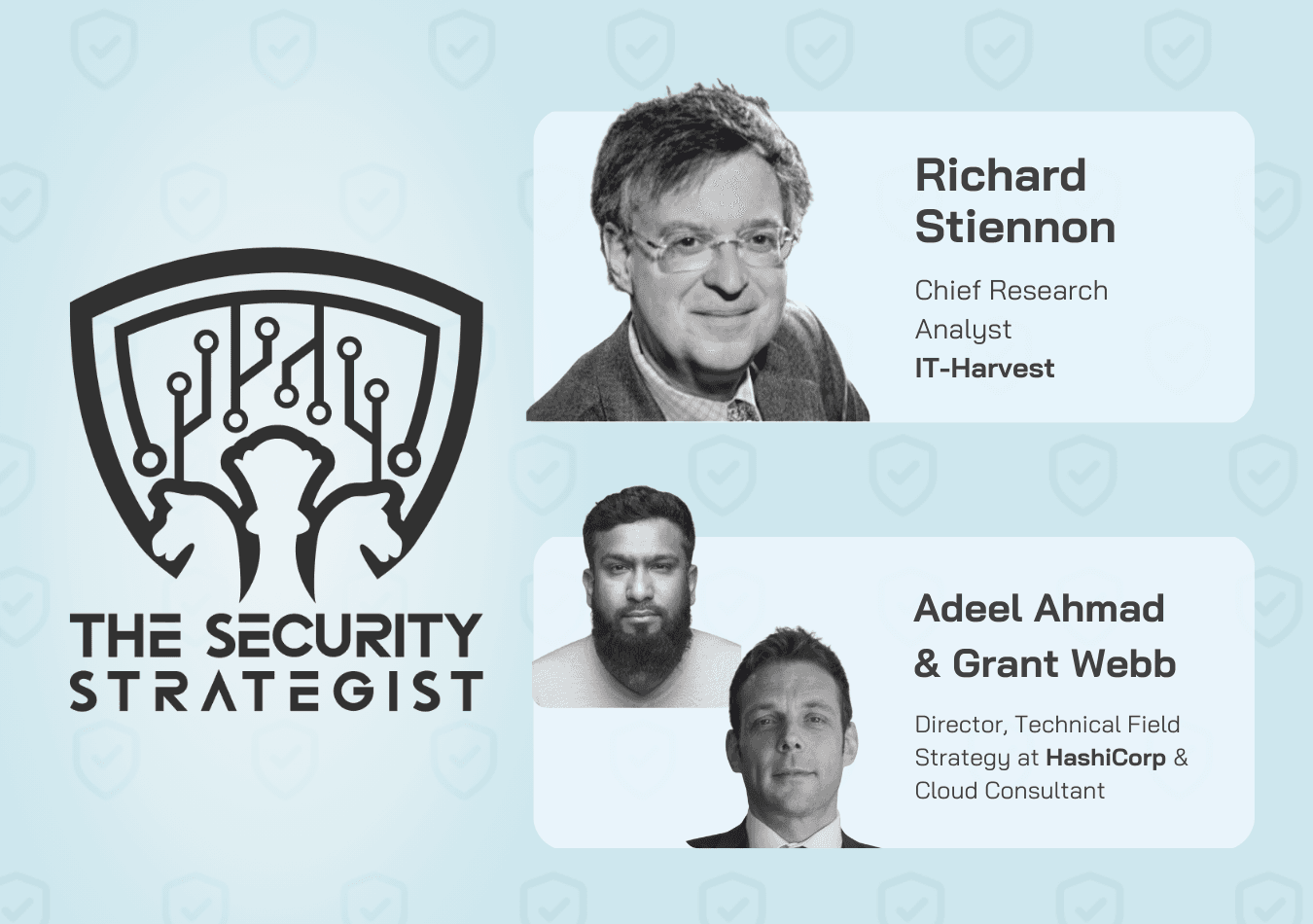In the quickly changing business world, innovation is crucial for staying ahead of competitors. Simultaneously, security has become a top concern due to increasingly complex cyber threats (for example, AI). This scenario creates an innovation vs. security paradox — the apparent contradiction between the need to innovate quickly and the necessity to maintain security.
It seems like an unavoidable trade-off, but it is possible to have security practices that empower IT to innovate faster. Analyst Richard Stiennon, HashiCorp’s Director of Technical Field Strategy Adeel Ahmad, and Cloud Strategist Grant Webb discussed the ways to make it possible on a podcast from Enterprise 360. The take-aways and approaches come down to this: when security is embedded early and strategically within an organization, it becomes an ally of innovation rather than a barrier. By changing the perspective and operational models, businesses can bridge the gap between innovation and security, enabling faster and more assured progress. This blog highlights the most important things these experts suggest you should consider.
»Use security as a catalyst for innovation
A misconception is that security hampers innovation. In truth, when implemented effectively, security can be the tool that enables an organization to advance rapidly and safely.
“It brings to mind my favorite quote from Bill Malek, a former Gartner analyst. And he used the analogy of brakes on a car. And he said, ‘Why do we have brakes on a car?’ And people would say, ‘So we can stop.’ And he'd say, ‘No, we have brakes on a car so you can go fast.’ And if security is the brakes on a car, how can you leverage it to help you go faster?’
— Richard Stiennon, Chief Research Analyst at IT-Harvest
This analogy illustrates how security isn’t about stopping progress; it’s about ensuring speed in a safe and controlled environment. Companies that prioritize security in their innovation processes find they can advance swiftly, prevent costly security breaches, and comply with regulations without losing flexibility.
»Integrate security into organizational processes
The secret to enhancing innovation lies in integrating security into development and operational processes. Many organizations treat security as a separate function, considering it for the first time near the conclusion of the build/go-to-market process. This often causes delays and conflicts between security and application development teams. To fix this, organizations should ensure security is a core component of every process.
“Viewing security in isolation introduces friction. By embedding security in development workflows, businesses can avoid this friction and ensure collaboration between innovation and security teams from the onset”
— Adeel Ahmad, Director of Technical Field Strategy, HashiCorp
For instance, platform teams are increasingly collaborating with security teams to incorporate security into software delivery workflows from the first step to the last. This proactive strategy lessens the cognitive burden on developers and makes security a fundamental part of innovation, rather than an afterthought.
»Adapt your operational models to support regulatory compliance and innovation
With the increasing number of regulatory requirements that companies must satisfy, it’s no surprise that some leaders believe that innovation must be hindered, to a degree, to comply. This might be especially true in sectors like finance, healthcare, and critical infrastructure, which are among the most heavily regulated.
The reality is that regulatory compliance is not the main source of friction; outdated operational models are. This means the solution is not to put up new barriers, but instead to adopt modern workflows and technologies that enable compliance checks within workflows. By aligning innovation and regulatory needs early on, businesses can minimize friction and maximize agility.
“Processes need to change to reflect new technology … the way we do things in the enterprise, all of that seems to be audited or governed or reviewed right at the end or just before release, as opposed to embedding that during design and having that process of iteration”
— Adeel Ahmad, Director of Technical Field Strategy, HashiCorp
»Embrace ongoing transformation and flexibility
Given today’s rapidly shifting market, innovation should be a continuous pursuit rather than a one-time endeavor. For survival, organizations must adopt a culture of ongoing transformation, where security and innovation are integrated and continuously evolving. And, this transformation should be viewed as an ongoing process rather than a project with a fixed end date.
This mindset enables businesses to adapt quickly to new security challenges, regulatory shifts, and technological advancements. By fostering a culture of continuous transformation, businesses can harmonize security and innovation to drive growth and competitiveness, rather than regard them as opposing forces.
“Transformation should be seen as a constant, not a fixed plan ... It’s more about our approach, rather than specific actions.”
— Adeel Ahmad, Director of Technical Field Strategy, HashiCorp
»Promote collaboration
A vital aspect of resolving the friction between innovation and security is promoting collaboration among security, development, and business teams. These functions often operate in silos, with security focused on safety and development focused on innovation.
To overcome this divide, organizations should create common objectives aligning security and development goals. One strategy involves nurturing "bi-directional empathy," where security teams understand innovation challenges and development teams recognize the importance of security.
A practical method is the concept of "safe change" — a shared goal encouraging teams to innovate while ensuring security is integral to every change. This collaboration fosters an environment where security and innovation work together toward common aims.
“A key element is encouraging the notion of bi-directional empathy by allowing platform engineering and security teams to see the challenges that product teams have, but also at the same time, allow product teams to see the challenges that security and platform engineering teams face.”
— Grant Webb, Cloud Strategist
»Why it’s a paradox
While security and innovation seem fundamentally at odds, they're not. By integrating security into the innovation process, promoting cross-functional collaboration, and fostering a culture of ongoing transformation, businesses can dismantle the barriers between these vital functions.
In doing so, they can protect themselves from emerging threats and gain the speed and agility required to thrive in today’s competitive market. Security does not impede innovation — it is a key enabler.
For the full conversation with Richard, Adeel,and Grant, listen to the podcast from Enterprise Management 360.





